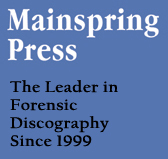Forgotten Black Musicians • Wendell P. Talbert
.
.
ROSA HENDERSON (Wendell P. Talbert, piano)
Good Woman’s Blues
New York: May 24, 1923
Victor 19084 (mx. B 28026 -2)
.
.
ROSA HENDERSON (Wendell P. Talbert, piano)
I’m Broke Fooling with You
New York: May 24, 1923
Victor 19084 (mx. B 28027 -2)
.
.
Like Noble Sissle, with whom he was associated off-and-on for many years, Wendell Talbert was largely a creature of the theater. Unlike Sissle, he left behind only a handful of issued recordings, and only in an accompanying role. As a result, he’s been largely overlooked by collectors and historians.
The earliest substantive reference we’ve found to Wendell Phillip (or Philips, depending on the account) Talbert shows him as a member of the Southern Jubilee Singers and Players in January 1912. This was a traveling organization that specialized in old-time “plantation” songs, traditional spirituals, and other fare that likely was selected at least in part for its appeal to white audiences.
.
Talbert as tenor, cellist, and pianist with the Southern Jubilee Singers and Players (Bismarck [North Dakota] Tribune, January 27, 1912)
.
By 1914, Talbert was a featured performer with William A. Hann’s Jubilee Singers, a group of “seven cultured ladies and gentlemen” whose offerings ran from “refined and wholesome humor” to spirituals and grand opera. Its members included soprano Florence Cole, who Talbert married in the same year. At about that time, Noble Sissle joined the troupe, initially filling in for Talbert on occasion, based upon some published programs from the period. Their paths would continue to cross for the next four decades.
.Wendell Talbert and Florence Cole-Talbert with Hann’s Jubilee Singers (Hutchinson [Kansas] Gazette, October 17, 1914)
.
The Talberts divorced at some point, although the date remains unclear. One secondary source cites 1915, but news reports as late as 1917 continued to state that the couple were married. The latest such report we’ve located so far, in the Xenia [Ohio] Daily Gazette for May 24, 1917, refers to Cole-Talbert’s “talented husband, Prof. Wendell Talbert.” However, she continued to use Cole-Talbert as her professional name, perhaps leading to some confusion in the press.
.
Florence Cole-Talbert is remembered primarily for her Black Swan recordings. She and Wendell had divorced by the time those recordings were made, but she continued to use her married name in stage work.
Ross Laird’s Moanin’ Low (Greenwood Press) and some other discographies incorrectly claim that Cole-Talbert was the same artist as Flo Bert. The latter was a white vaudeville comedienne who was one-half of the team of Brendlar & Bert, and was pictured in some Puritan phonograph publicity photos.
.
Talbert appears to have left Hann’s company in 1918 or 1919, when mentions of him vanish from the press. At some point in the early 1920s, he made the transition from old-time tunes and spirituals to jazz and blues, albeit of a rather tame sort. In July 1921, it was reported that he would be writing for the Chamberlain Company, a newly launched music publisher in Detroit. Anecdotal reports credit him with coming up with the name for Sissle & Blake’s “Shuffle Along,” and conducting the pit orchestra in one of the show’s touring companies, but those stories remain to be confirmed.
In 1923, Talbert resurfaced as the piano accompanist on a few records by vaudeville-blues singers Rosa Henderson (Victor) and Lethia Hill (Vocalion). His two recordings with Henderson were released in Victor’s first attempt at a race-record series:
..
Victor’s first attempt at a race-record series, July 1923. Sissle’s and Talbert’s sessions were held a day apart. Sissle by this time was a major star, and it’s tempting to speculate that he might have arranged for Talbert to record for Victor.
.
By late 1925, Talbert had remarried and was touring in vaudeville with his Chocolate Fiends, a large revue that starred Alethia Hill. In November of that year, he accompanied two sides by comedian Billy King on Okeh. His orchestra made a test recording of “Deep Henderson” for Brunswick of October 28, 1926, which unfortunately was not approved for issue.
.
Talbert and company on the road (Indianapolis, December 1925)
.
Talbert remarried in 1926 and publicly credited new wife Hallie for her help and inspiration. He continued to tour with the Chocolate Fiends into the late 1920s, but made no further issued recordings that we know of.
.
Pittsburgh Courier (October 9, 1926)
.
Pittsburgh Courier (September 15, 1927)
.
In the early 1930s, Talbert returned to his roots with his Dusky Troubadours, a choir that specialized in the same sort of material he had performed with Hann’s Jubilee Singers two decades earlier. The group broadcast over radio station WOR (Newark, New Jersey) on occasion. By 1934, Talbert had augmented the choir with an eighteen-piece orchestra.
Talbert with the USO during World War II (Louisville Courier-Journal, September 24, 1944)
.
During World War II, Talbert served as musical advisor to the Colored USO of Central New Jersey. In July 1950, Talbert rejoined Noble Sissle, probably for the last time, in a fund-raiser for the New York Heart Association. He died in the early 1950s.
__________
Article ©2024 by Allan R. Sutton. All rights are reserved.
.
Discover more from American Sound-Recording History from Mainspring Press
Subscribe to get the latest posts to your email.









